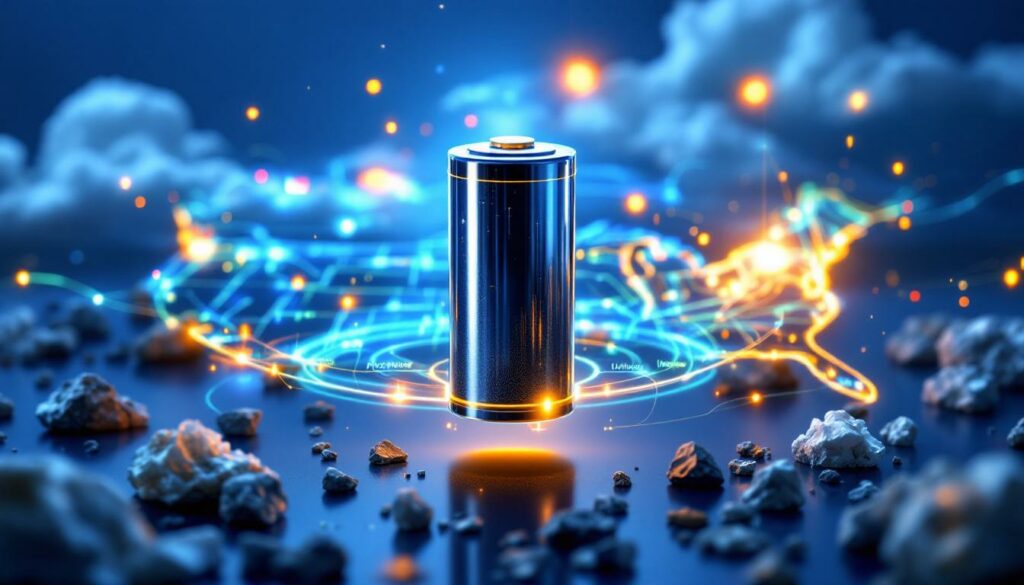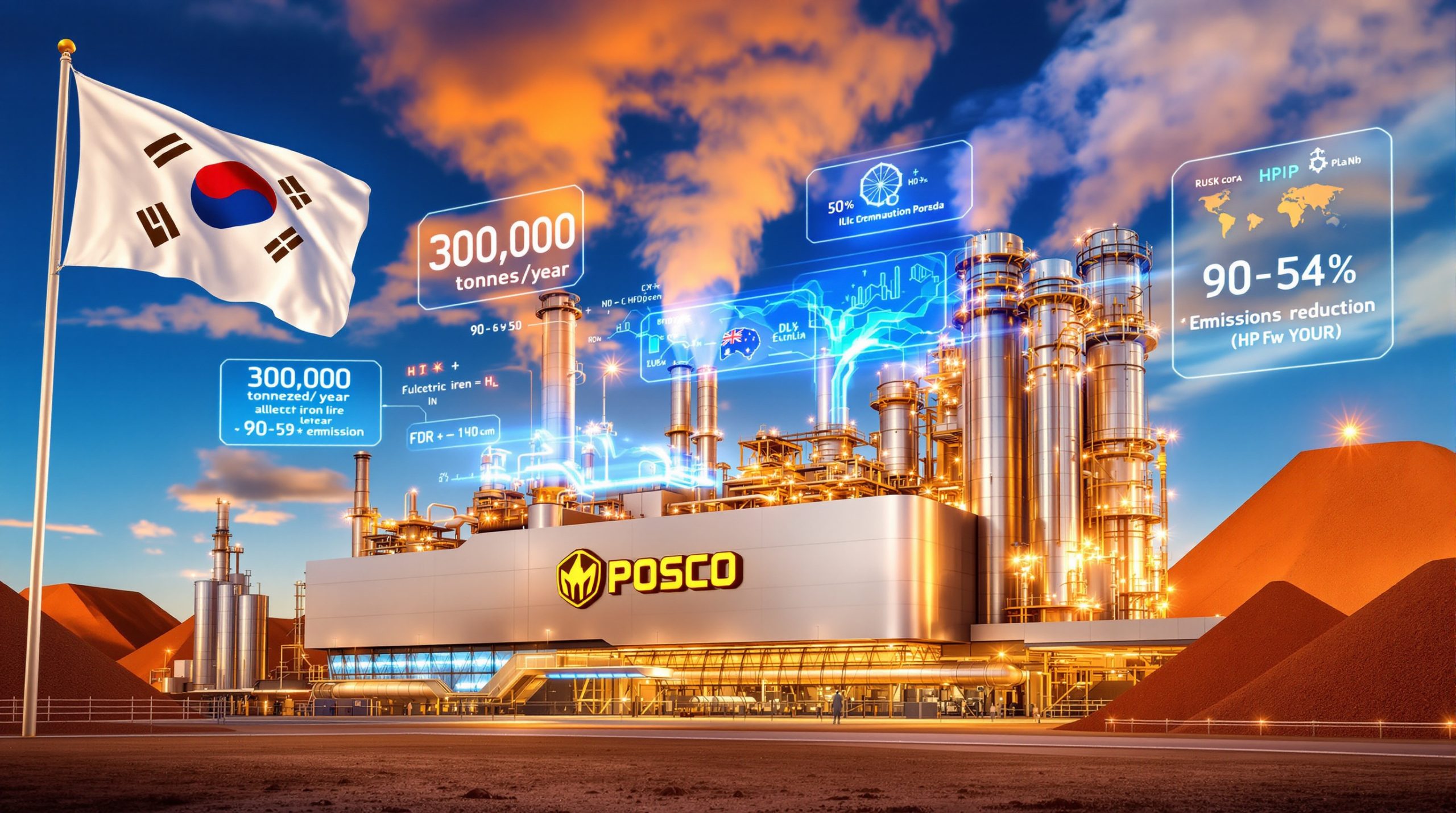How Are North American Critical Minerals Revolutionizing Domestic Battery Production?
In a significant development for North America's clean energy future, First Phosphate has successfully produced commercial-grade lithium iron phosphate (LFP) battery cells using entirely North American-sourced critical minerals. This breakthrough represents a pivotal moment in reducing dependency on overseas suppliers and establishing a resilient, domestic battery supply chain that could transform multiple industries.
What Makes First Phosphate's Battery Cell Production a Breakthrough?
First Phosphate's achievement marks the first time commercial-grade LFP 18650 format battery cells have been produced using a complete North American mineral supply chain. This milestone represents more than just a manufacturing accomplishment—it signals the potential rebirth of North America's position in battery technology leadership.
"Today we demonstrate that North America, and Quebec in particular, possess the full spectrum of critical minerals and industrial capabilities to re-onshore LFP battery cell production," stated John Passalacqua, CEO of First Phosphate.
The significance of this development cannot be overstated. While LFP battery technology was originally developed in North America, manufacturing leadership had shifted overseas in recent decades, particularly to China, which now controls over 70% of global LFP production capacity. First Phosphate's achievement demonstrates that the technical expertise and resource availability exist to reclaim this critical manufacturing capability.
What makes this development particularly notable is the integration of the entire supply chain—from mining raw materials to producing finished battery cells—within North America. This comprehensive approach addresses vulnerabilities that have plagued previous attempts to establish domestic battery production.
Where Are the Critical Minerals Sourced From?
The success of First Phosphate's battery production relies on a carefully orchestrated network of North American mineral sources and processing facilities:
Phosphate Source and Processing:
- High-purity phosphoric acid derived from igneous phosphate concentrate from the Bégin-Lamarche property in Quebec, Canada
- The unique geological characteristics of Quebec's phosphate deposits make them particularly suitable for battery applications, with high purity levels and low contaminants
- Processing was completed at Prayon Technologies' pilot facilities in Belgium, representing the only international step in an otherwise North American supply chain
Iron Source and Processing:
- Iron powder processed from magnetite concentrate also sourced from the Bégin-Lamarche property in Quebec
- Processing conducted by GKN Hoeganaes in Tennessee, leveraging specialized metallurgical techniques to achieve battery-grade specifications
- The dual-sourcing of both phosphate and iron from the same Quebec property highlights the strategic value of this mineral-rich region
Lithium and Graphite Sources:
- Lithium carbonate sourced from Century Lithium's operations in Nevada, demonstrating the viability of domestic lithium resources
- Natural graphite-based active anode material produced by Nouveau Monde Graphite from its Quebec operations, utilizing the province's abundant graphite resources
This integrated approach to material sourcing represents a significant departure from the fragmented supply chains that have characterized previous battery manufacturing efforts in North America. By establishing direct connections between mining operations and battery production, First Phosphate has created a more resilient and traceable supply chain.
How Was the Battery Production Process Executed?
The technical execution of producing LFP battery cells using North American materials required sophisticated coordination across multiple specialized facilities:
Technical Implementation:
- Assembly of the LFP 18650 battery cells performed by Ultion Technologies at their Las Vegas, Nevada facility
- Ultion specializes in LFP battery materials and cells, with development and pack assembly operations focused on North American applications
- The production process involved rigorous quality control measures to ensure the cells met commercial-grade specifications
Process Integration Challenges:
- Matching material specifications across different North American suppliers required significant technical adjustments
- Processing pathways had to be optimized for the specific characteristics of North American mineral sources
- Validation testing confirmed performance metrics comparable to established international standards
The success of the battery cell production demonstrates not only the availability of North American materials but also the technical capability to integrate these materials into functional energy storage devices. This achievement required overcoming significant technical hurdles in material compatibility and processing techniques.
"Ultion specializes in LFP battery materials and cells, with development and pack assembly operations focused on North American applications," noted the project announcement, highlighting the specialized expertise required for this achievement.
Why Does North American Battery Production Matter?
The establishment of domestic LFP battery production capabilities has profound implications for North America's economic security, industrial competitiveness, and strategic independence.
Strategic Independence Benefits:
- Reduces reliance on overseas supply chains for critical minerals energy transition
- Enhances energy security for North American industries by ensuring stable access to battery technology
- Supports domestic manufacturing capabilities and job creation across multiple states and provinces
- Aligns with government initiatives such as the U.S. Inflation Reduction Act, which provides incentives for domestic content in clean energy technologies
Economic and Environmental Advantages:
- Potentially reduces carbon footprint by minimizing transportation of materials across global supply chains
- Creates opportunities for regional economic development in mining communities and manufacturing centers
- Enables compliance with increasingly stringent domestic content requirements in various regulations
- Establishes a foundation for technological innovation that can further enhance North American competitiveness
As John Passalacqua emphasized, "Reclaiming [LFP] leadership is essential to securing North American energy storage, mobility, data centre, robotics and defence industry infrastructure." This statement highlights the cross-cutting importance of battery technology across multiple strategic sectors.
The ability to produce batteries domestically represents not just an economic opportunity but a matter of national security, particularly as critical infrastructure increasingly depends on reliable energy storage solutions.
What Applications Will Benefit From Domestic LFP Battery Production?
The establishment of North American LFP battery production capabilities will have far-reaching implications across multiple industries that require safe, reliable energy storage solutions.
Energy Storage Sector Opportunities:
- Grid-scale storage systems to support renewable energy integration
- Commercial and residential backup power applications
- Microgrids for remote communities and critical infrastructure
- Utility load balancing and peak shaving applications
Transportation Electrification Support:
- Electric vehicle manufacturers seeking domestic battery sources
- Commercial fleet electrification projects
- Public transportation systems transitioning to electric propulsion
- Specialty vehicle applications requiring high safety standards
Critical Infrastructure Protection:
- Data center backup power systems requiring high reliability
- Telecommunications network resilience during grid outages
- Military and defense applications requiring secure supply chains
- Healthcare facility backup power systems
LFP chemistry offers distinct advantages for these applications, particularly its excellent safety profile, thermal stability, and long cycle life. While LFP cells have somewhat lower energy density than some other lithium-ion chemistries, their safety characteristics make them ideal for applications where risk mitigation is paramount.
The defense sector stands to benefit particularly from secure, domestically-produced battery systems. Military applications often require energy storage solutions with assured supply chains that are not vulnerable to international disruptions or potential adversary control.
How Does This Development Compare to Global Battery Production?
While First Phosphate's achievement represents a significant milestone for North American battery production, it must be viewed in the context of the current global battery manufacturing landscape.
Current State of Global LFP Manufacturing:
- China dominates global LFP production, accounting for more than 70% of manufacturing capacity
- Chinese manufacturers benefit from established scale economies and extensive supply chain integration
- European battery initiatives are accelerating but remain focused primarily on nickel-manganese-cobalt (NMC) chemistries
- North American mining trends show increasing focus on critical minerals for batteries
Technical Performance Comparisons:
- Energy density: LFP batteries (
500 Wh/L) generally offer lower energy density than NMC alternatives (700 Wh/L) - Cycle life: LFP typically provides superior longevity, often exceeding 3,000 cycles compared to 1,000-2,000 for NMC
- Safety profile: LFP chemistry offers excellent thermal stability and reduced fire risk compared to other lithium-ion chemistries
- Cost structure: While material costs may be lower for LFP, economies of scale currently favor established Asian manufacturers
The path to commercial competitiveness for North American LFP production will require addressing manufacturing scale challenges. First Phosphate's demonstration proves technical feasibility, but achieving cost parity with established global manufacturers will require significant investment in production capacity and continued process optimization.
Nevertheless, this development positions North America to begin reclaiming technological leadership in a battery chemistry that originated in the region but has since been dominated by overseas producers.
What's Next for North American Battery Manufacturing?
The successful production of LFP cells using North American minerals represents an important first step, but significant challenges remain in scaling this achievement to commercial relevance.
Scaling Challenges and Opportunities:
- Transitioning from pilot-scale to commercial production volumes
- Establishing automated manufacturing processes to improve consistency and reduce costs
- Developing the workforce expertise required for advanced battery manufacturing
- Creating the complete ecosystem of suppliers and technical capabilities
Future Integration Possibilities:
- Expanding North American critical mineral sources beyond current partners
- Completing the full domestic supply chain by relocating all processing steps to North America
- Developing specialized LFP formulations optimized for specific applications
- Exploring alternative cell formats beyond the 18650 cylindrical design
First Phosphate's achievement demonstrates proof-of-concept, but translating this into a commercially competitive industry will require sustained investment and strategic focus. The economics of battery production are heavily influenced by scale, with gigafactory-sized facilities typically needed to achieve cost competitiveness.
Nevertheless, this development creates a foundation upon which North America can build a more resilient and independent battery supply chain, particularly for applications where security of supply and safety characteristics outweigh absolute cost considerations. Furthermore, advancements in direct lithium extraction boost processing capabilities, potentially accelerating domestic lithium production.
FAQ: North American Battery Production
What is an LFP 18650 battery cell?
LFP (lithium iron phosphate) 18650 cells are cylindrical battery cells measuring 18mm in diameter and 65mm in length. They use LFP chemistry, which offers excellent safety, long cycle life, and thermal stability compared to other lithium-ion chemistries, though with somewhat lower energy density. The 18650 format is a standardized size widely used in various applications from power tools to electric vehicles.
Why is domestic battery production important for North America?
Domestic production reduces dependency on foreign suppliers, creates jobs, ensures supply chain security, supports national security interests, and helps meet requirements for domestic content in various regulations and incentive programs. As electrification accelerates across multiple industries, control of battery metals investment becomes increasingly strategic for economic competitiveness.
How does First Phosphate's achievement compare to global battery production?
While global battery production remains dominated by Asian manufacturers, particularly in China, this development demonstrates North America's capability to establish a complete supply chain from raw materials to finished cells. Though current production is at pilot scale compared to China's gigafactories, it provides a foundation for growth and proves the technical feasibility of North American production.
What challenges remain for North American battery production?
Scaling production to commercial levels, reducing costs to compete with established manufacturers, developing specialized workforce expertise, and establishing the complete ecosystem of suppliers and technical capabilities remain significant challenges. Additionally, completing the full North American supply chain would require establishing domestic processing capabilities for all materials, including the phosphate processing currently conducted in Belgium.
What makes Quebec's mineral resources particularly valuable for battery production?
Quebec's igneous phosphate deposits offer high purity levels with low contaminants, making them well-suited for battery applications. The province also has significant graphite resources, and its proximity to U.S. manufacturing centers creates logistical advantages. Quebec's abundant hydroelectric power also provides low-carbon energy for processing these minerals, potentially reducing the overall environmental footprint of battery production. Recent policy developments, including the executive order on critical minerals, further enhance the strategic importance of these resources.
Want to Catch the Next Major Mineral Discovery Before the Market?
Discovery Alert's proprietary Discovery IQ model delivers instant notifications of significant ASX mineral discoveries, transforming complex data into actionable investment insights before the broader market reacts. Explore why historic discoveries generate substantial returns by visiting Discovery Alert's dedicated discoveries page and begin your 30-day free trial today.




